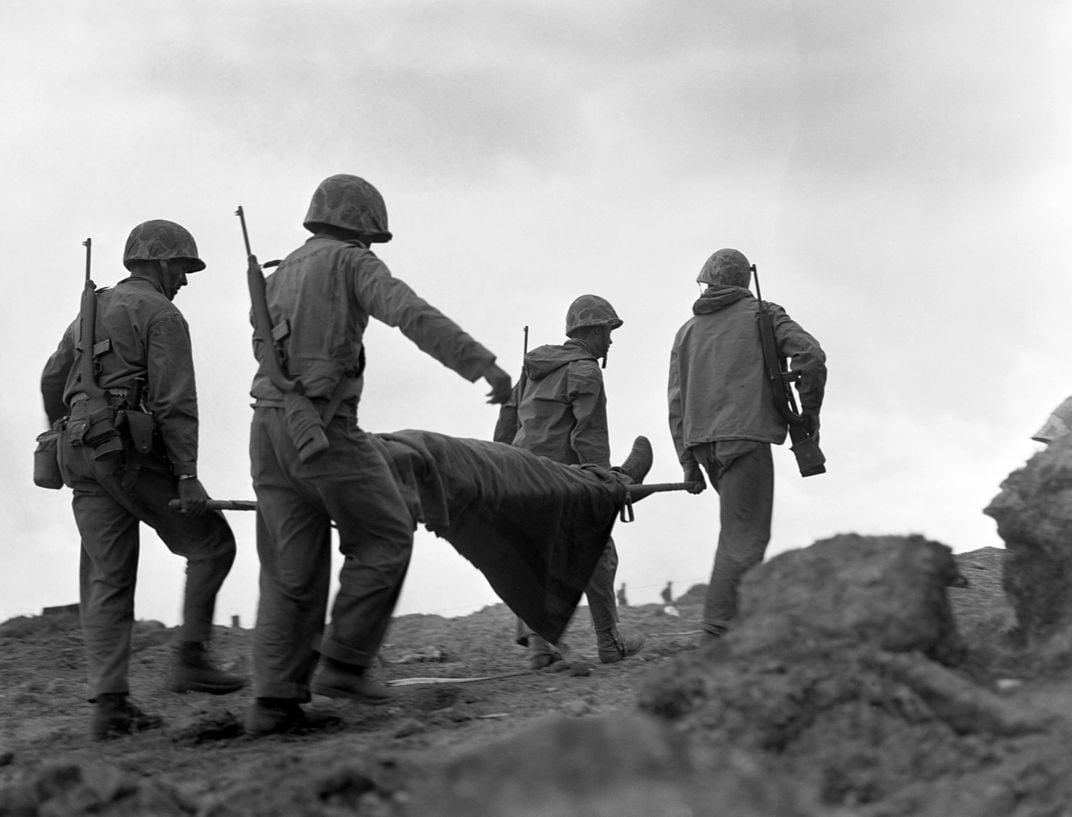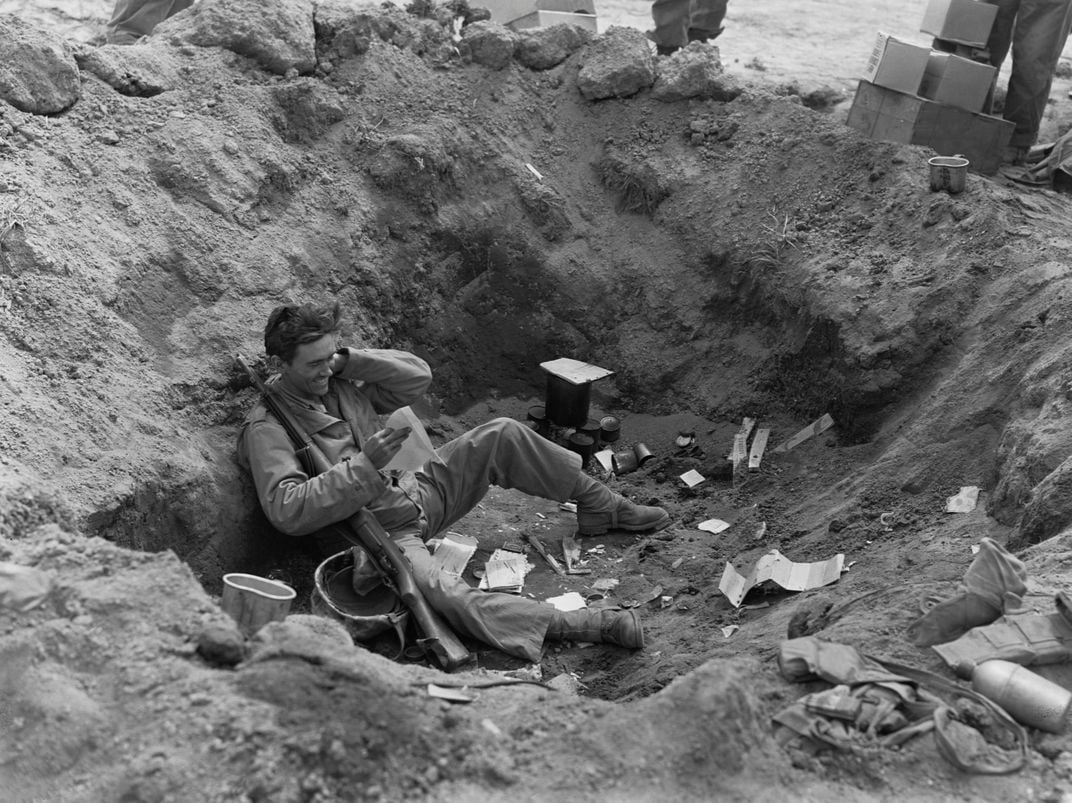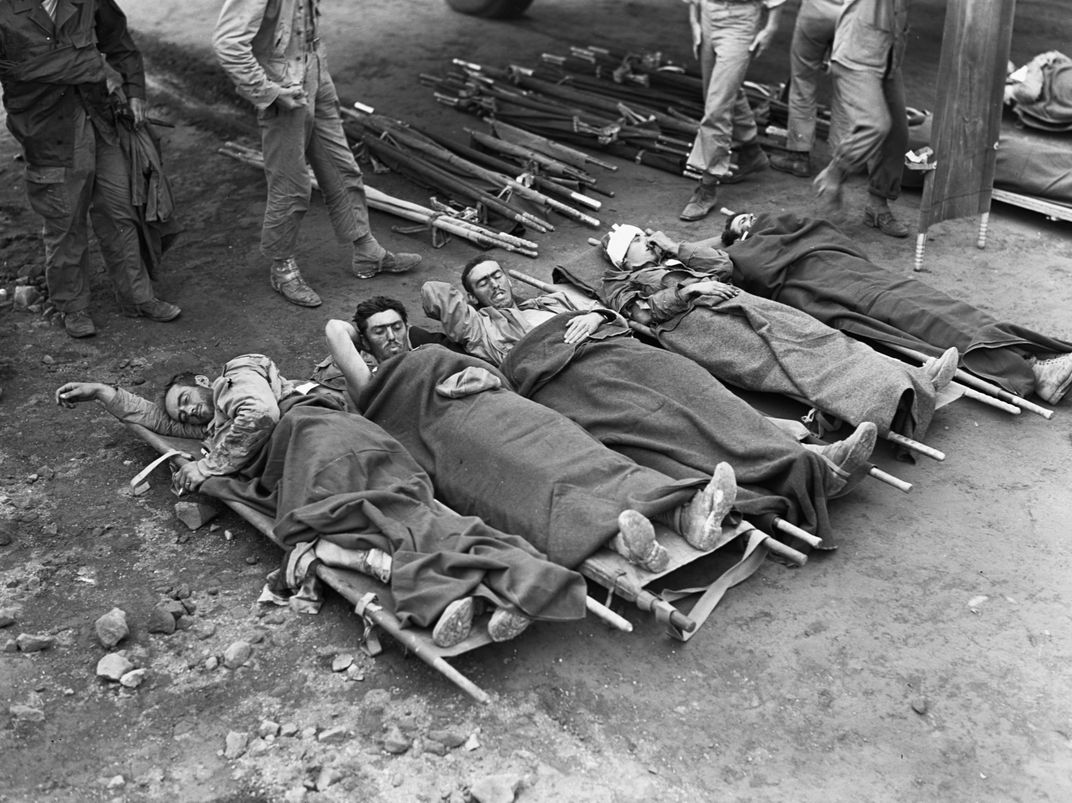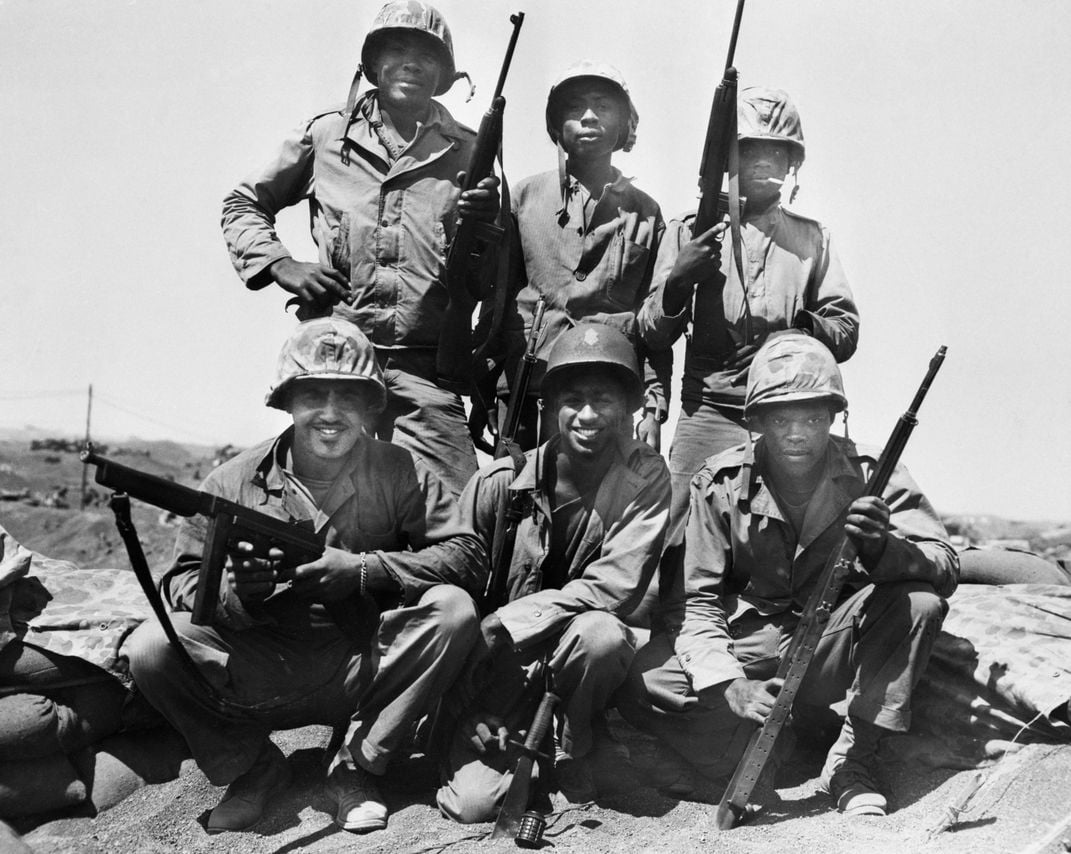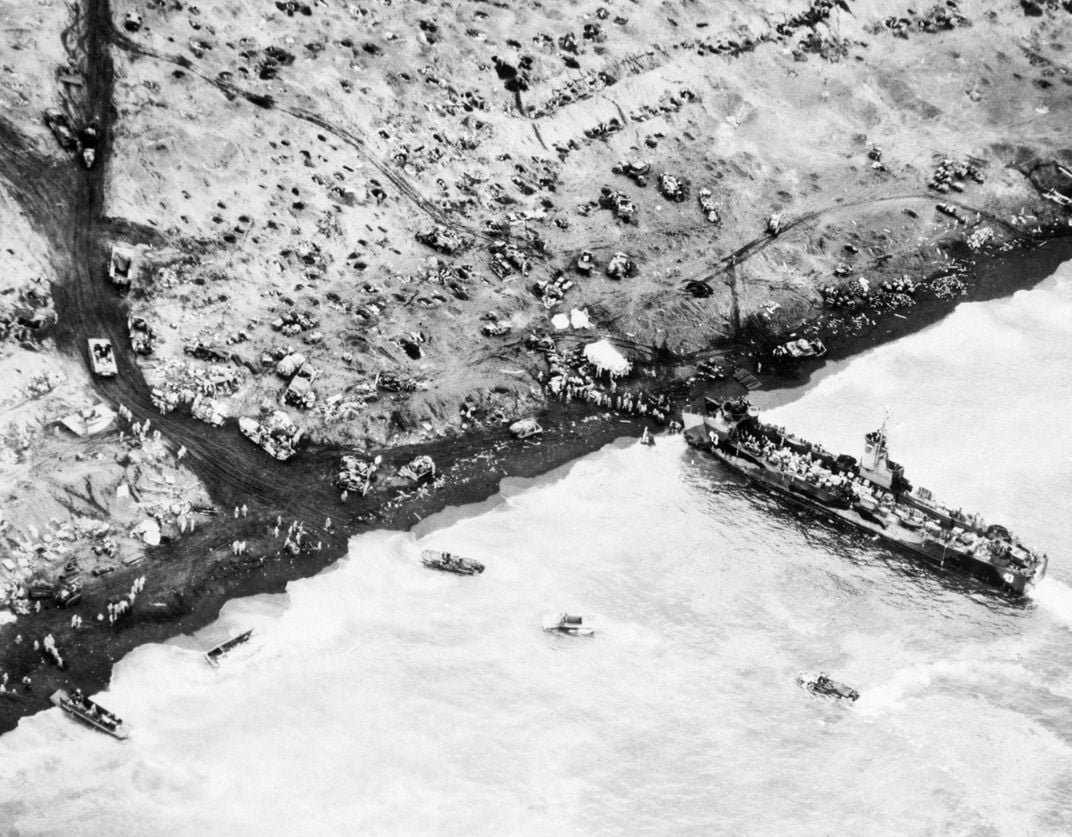Photos From the Battle of Iwo Jima to Mark Its 70th Anniversary
The battle for the Pacific island in the late winter of 1945 positioned the United States to invade mainland Japan, but at a cost
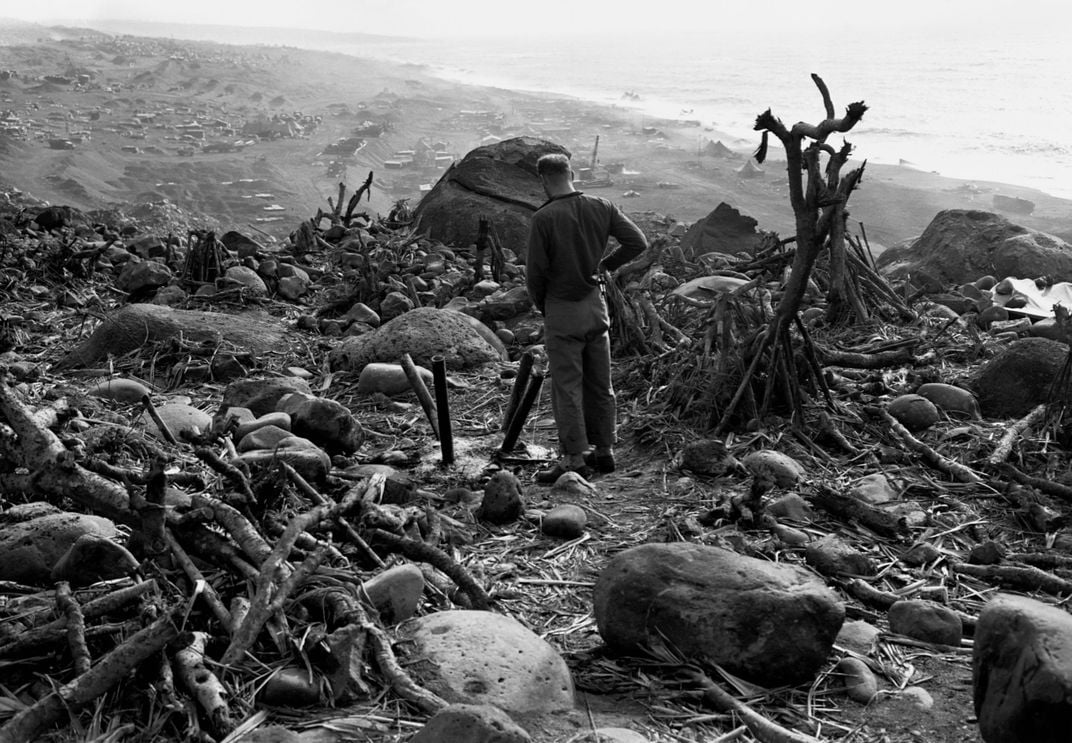
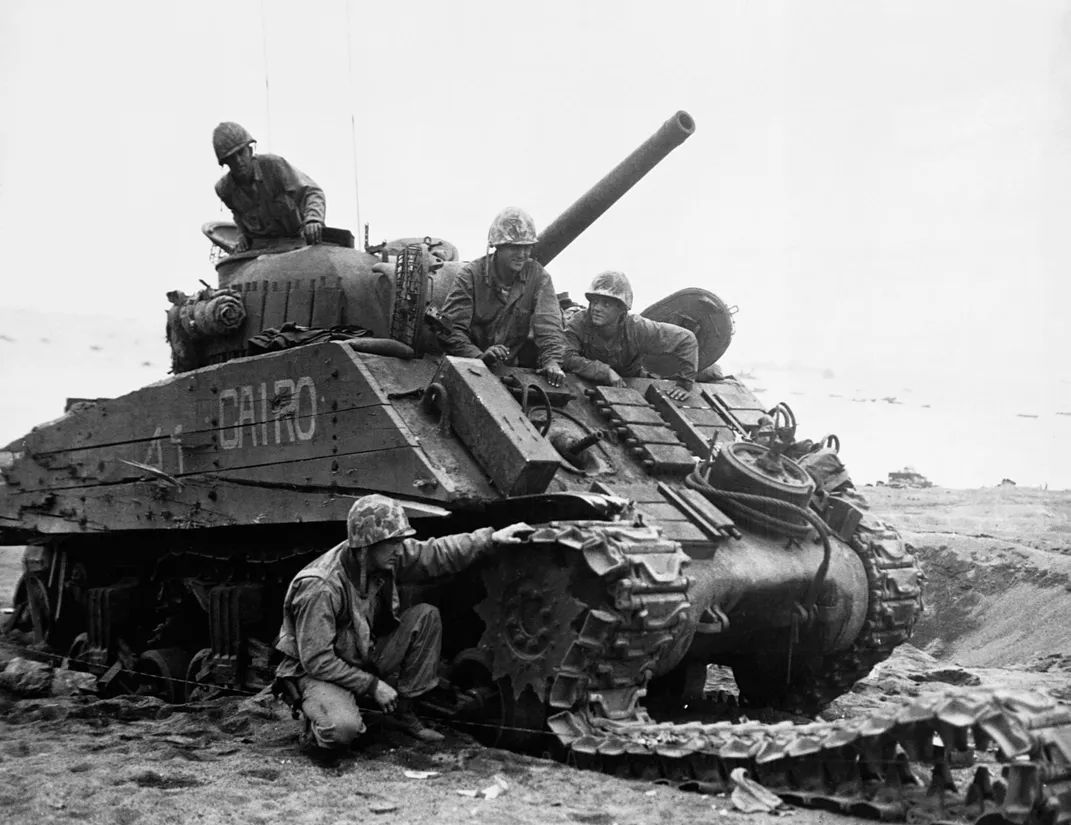
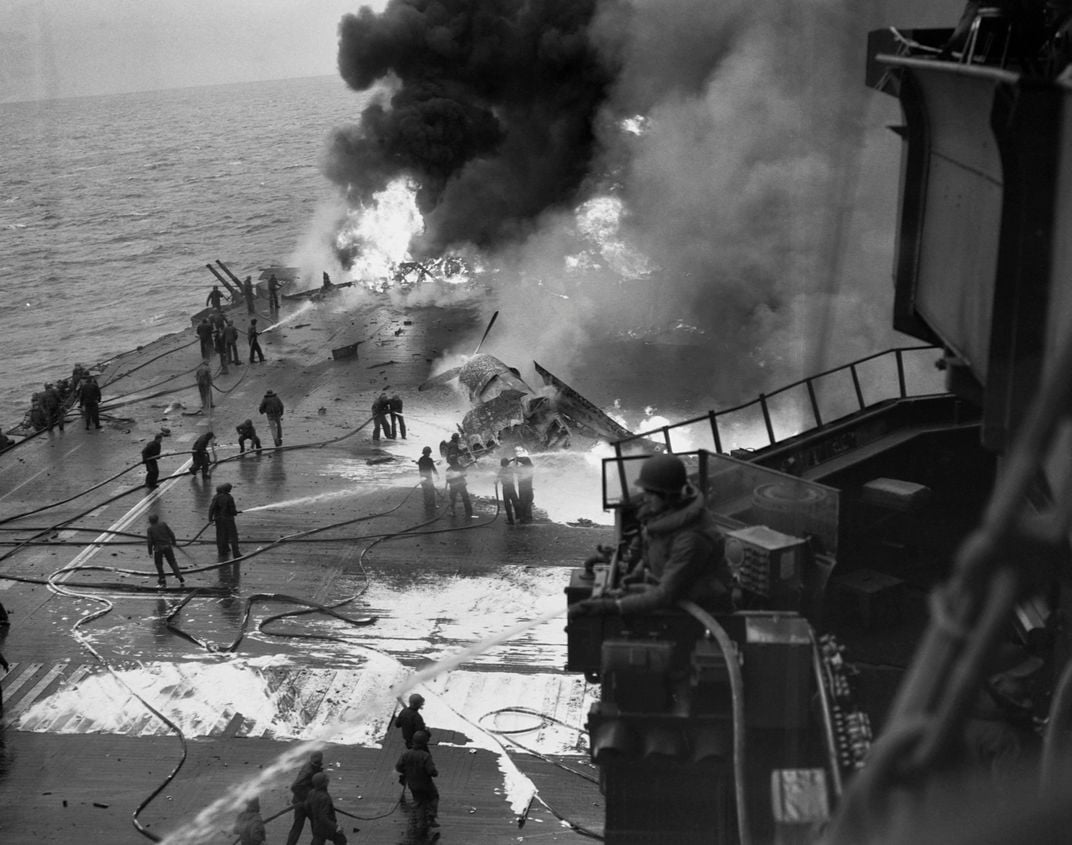
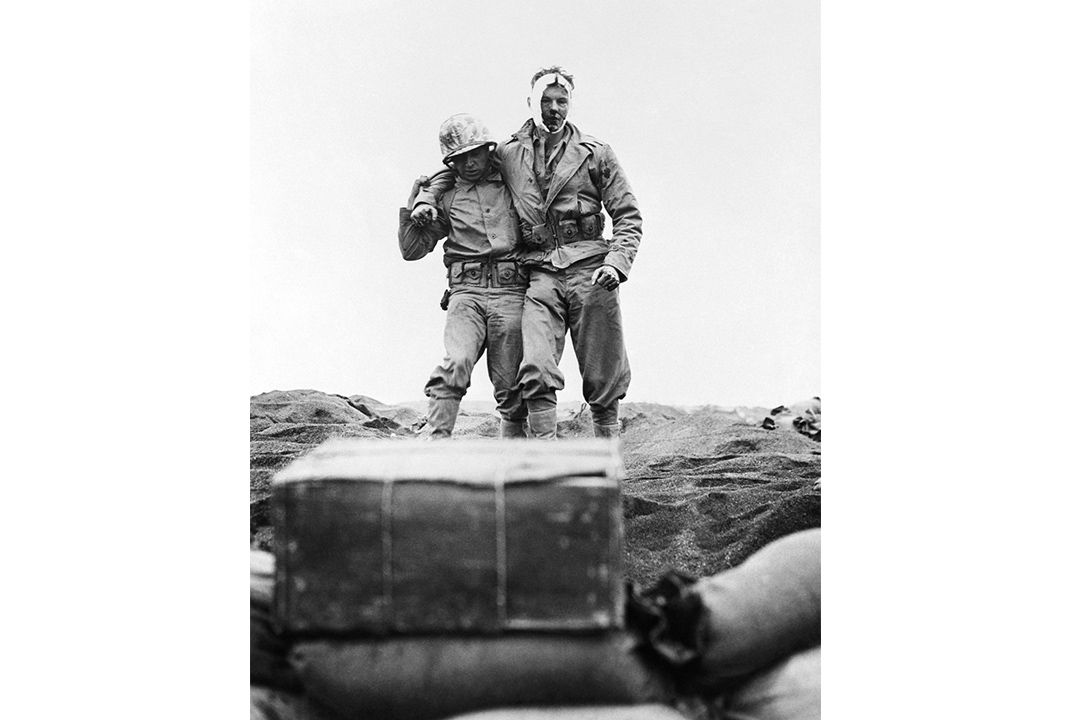
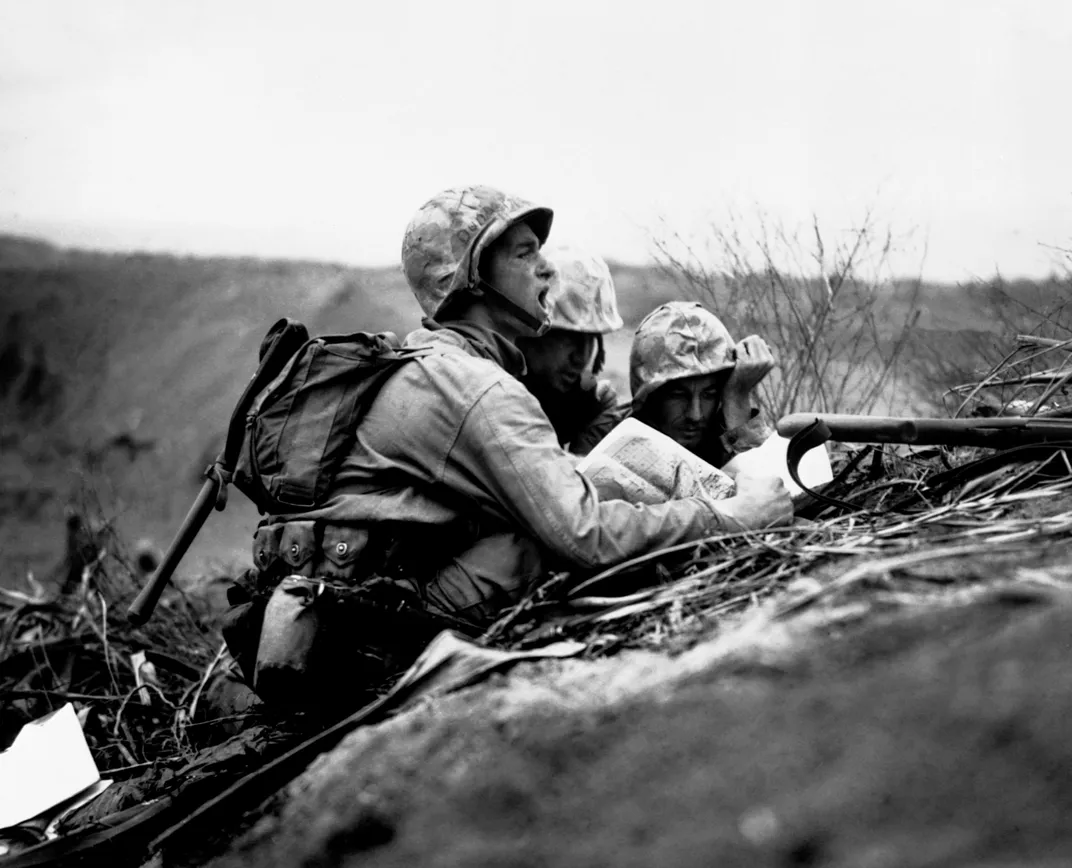
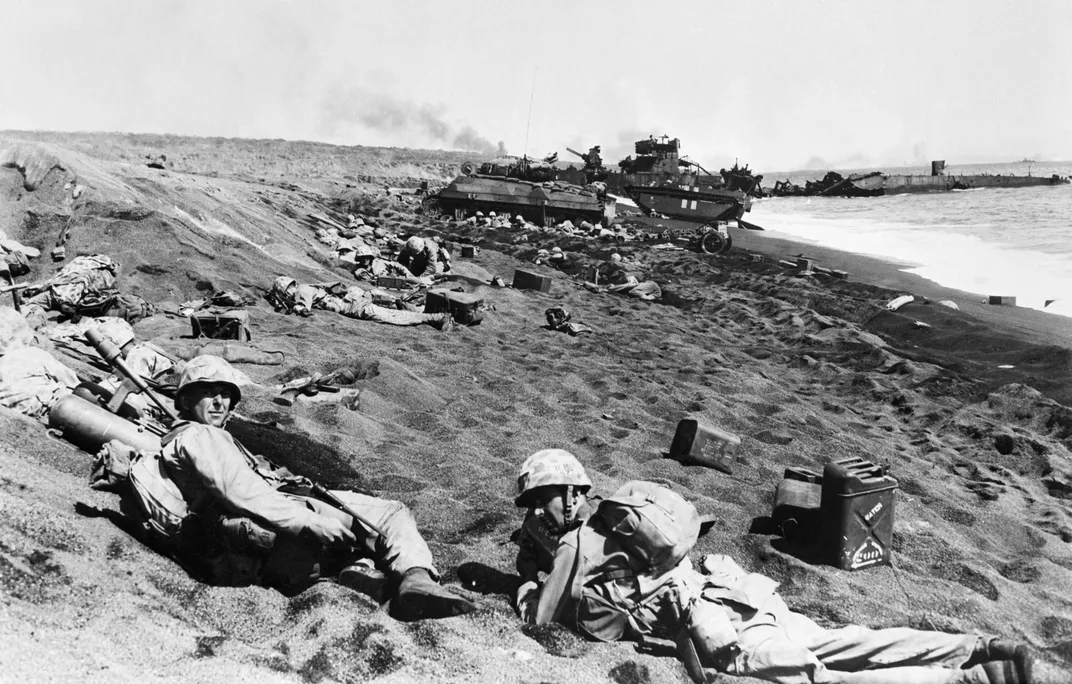
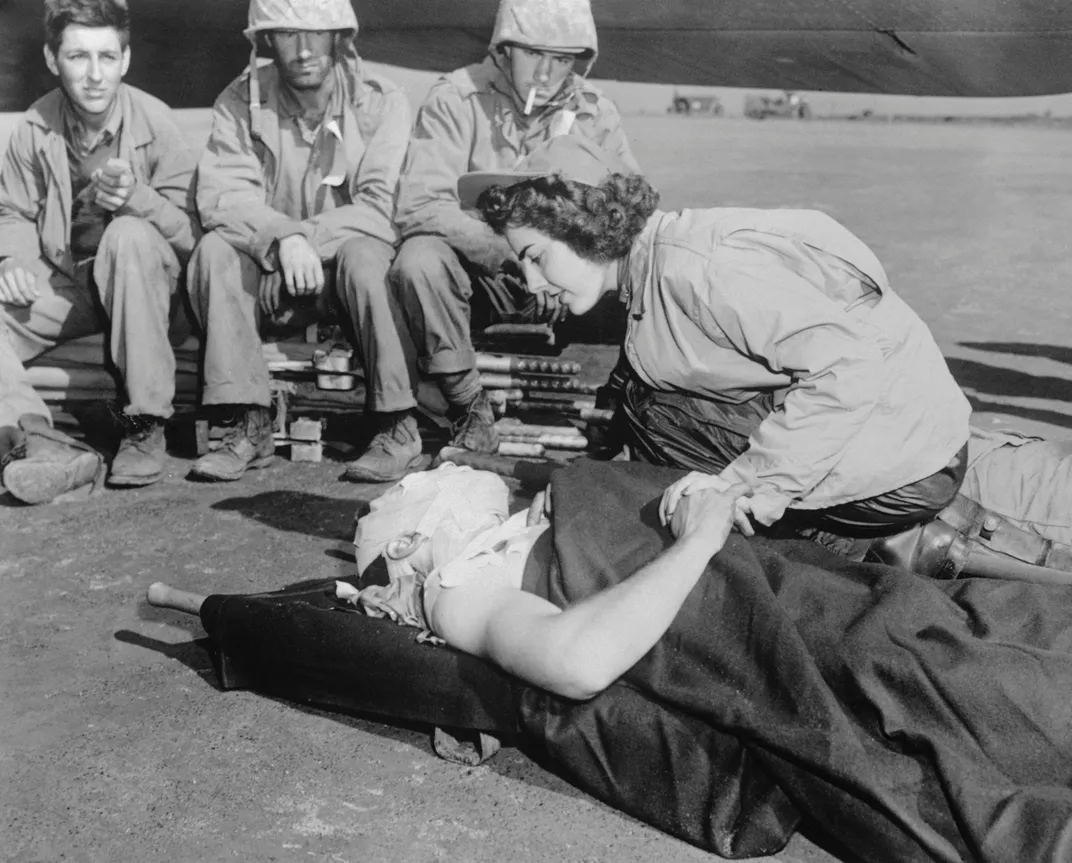
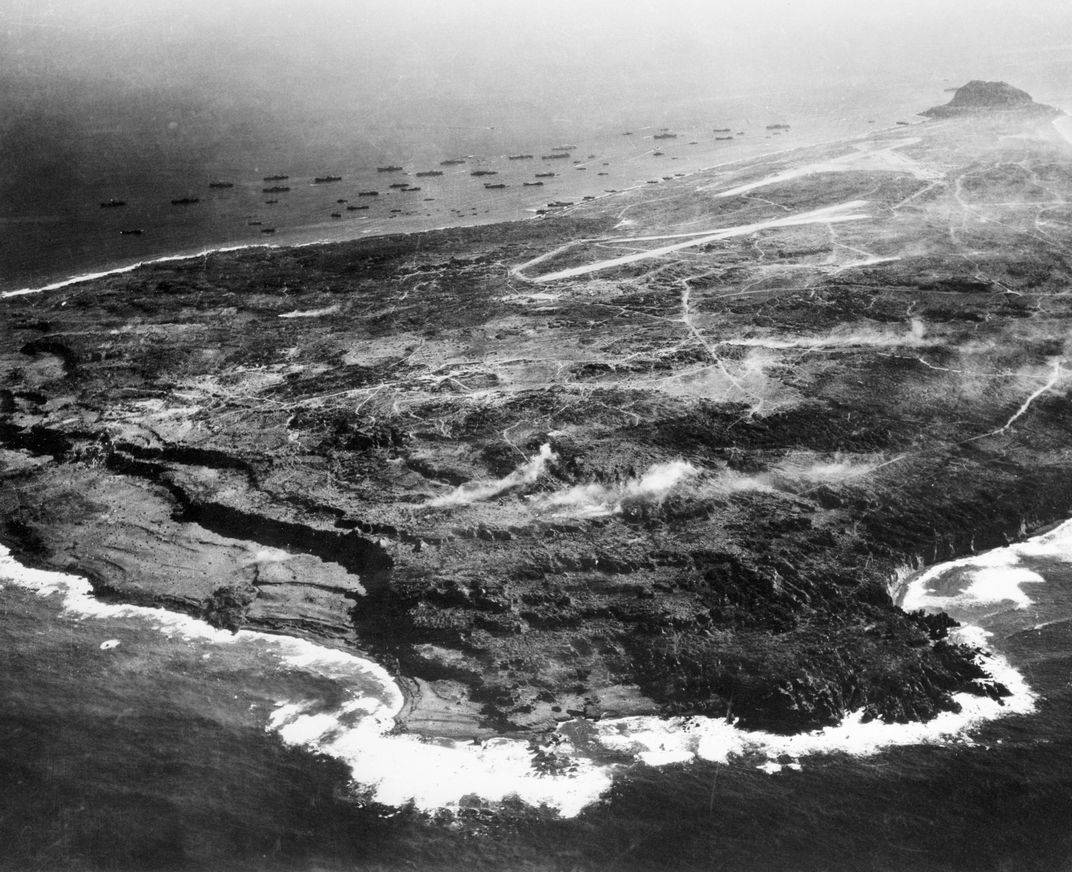
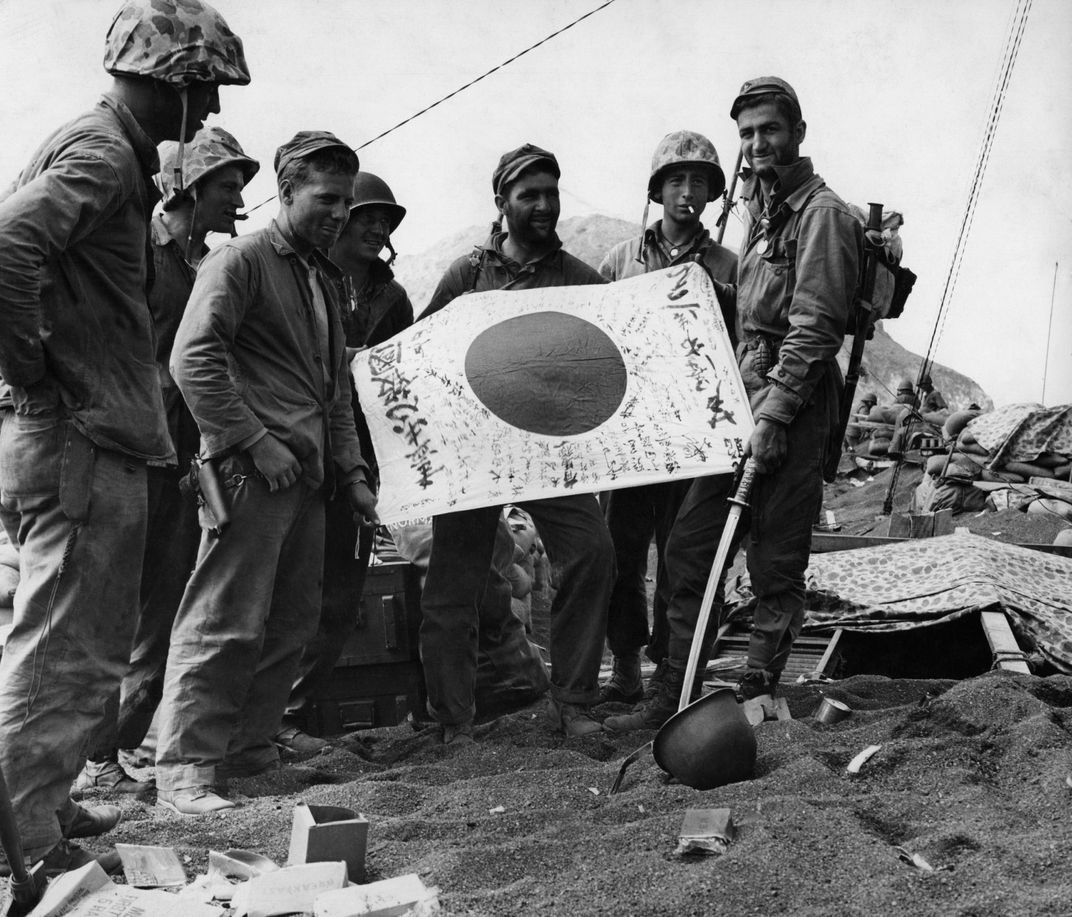
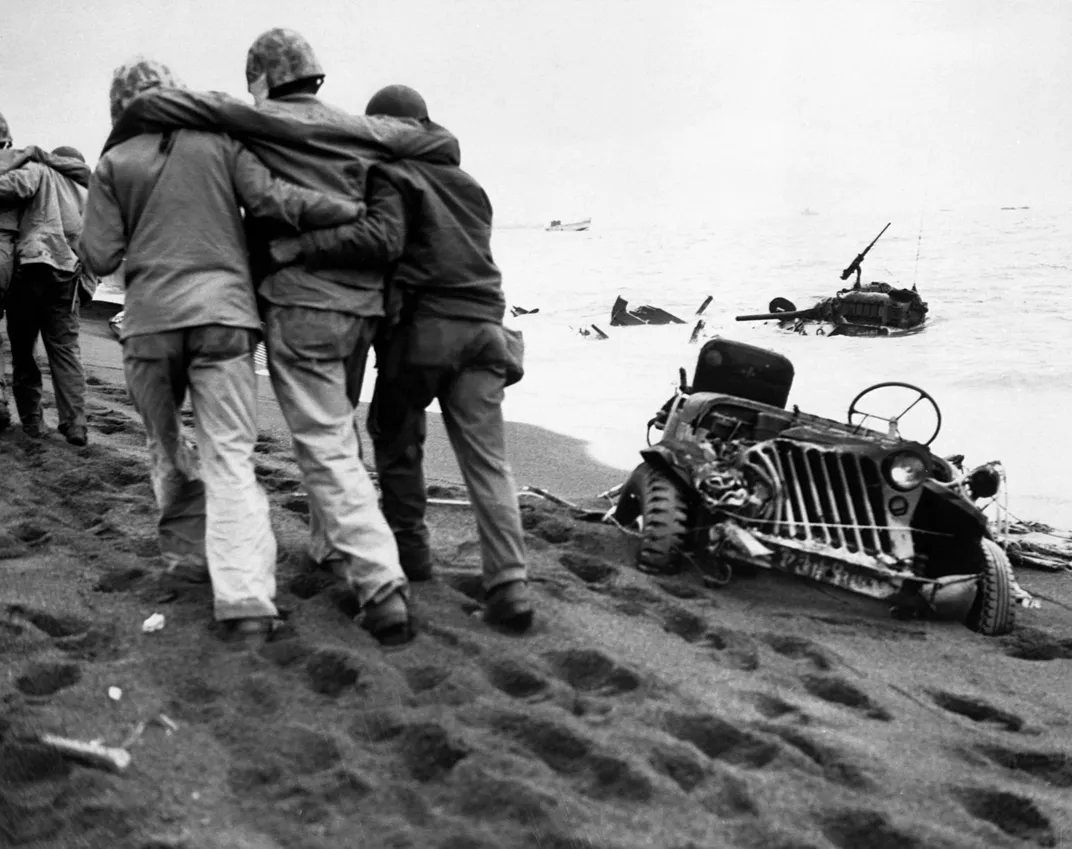
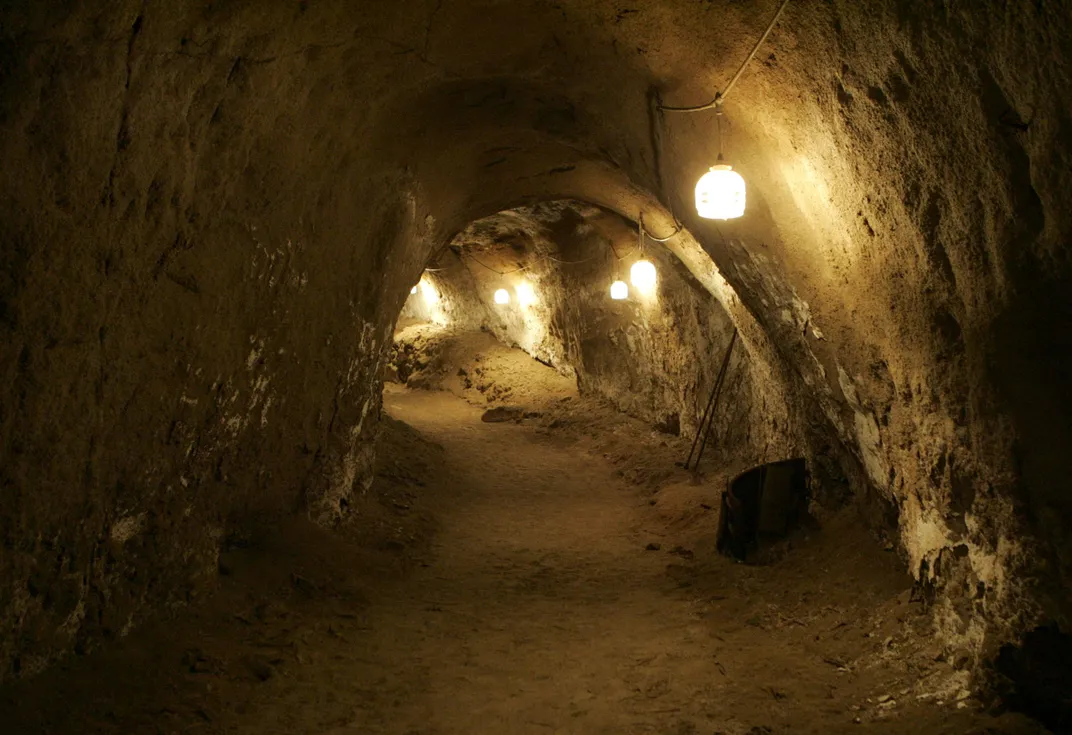
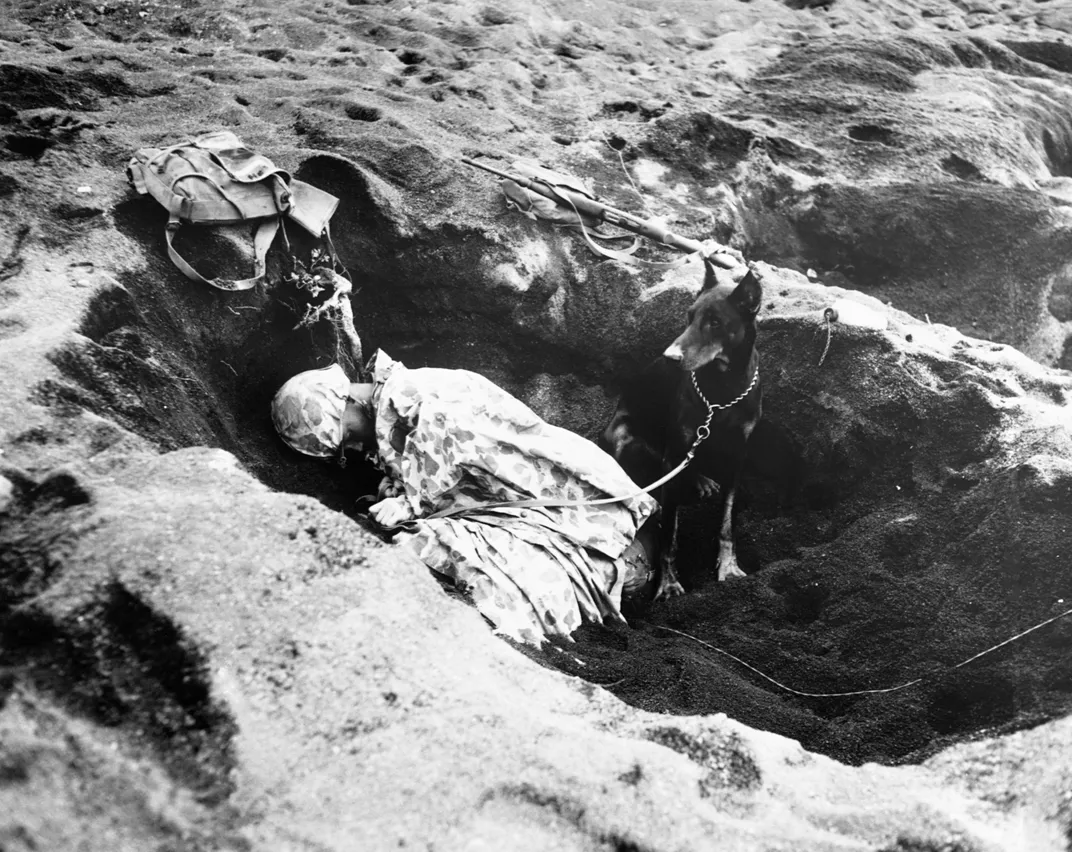
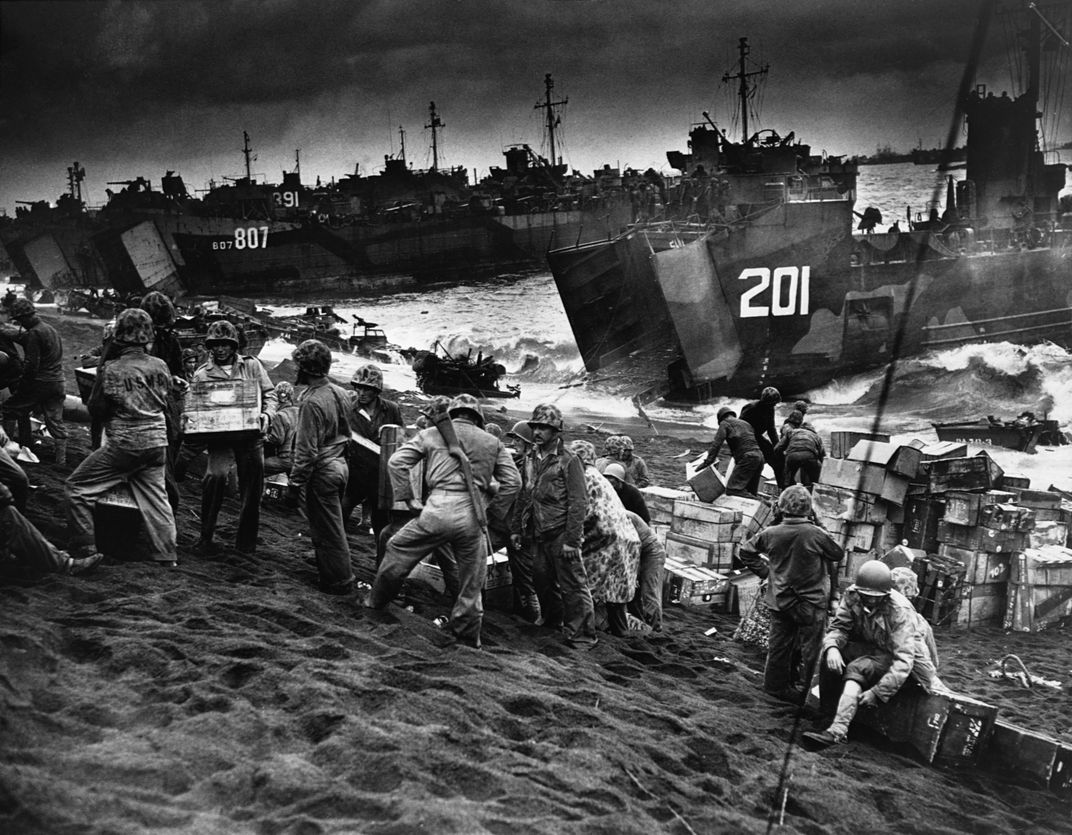

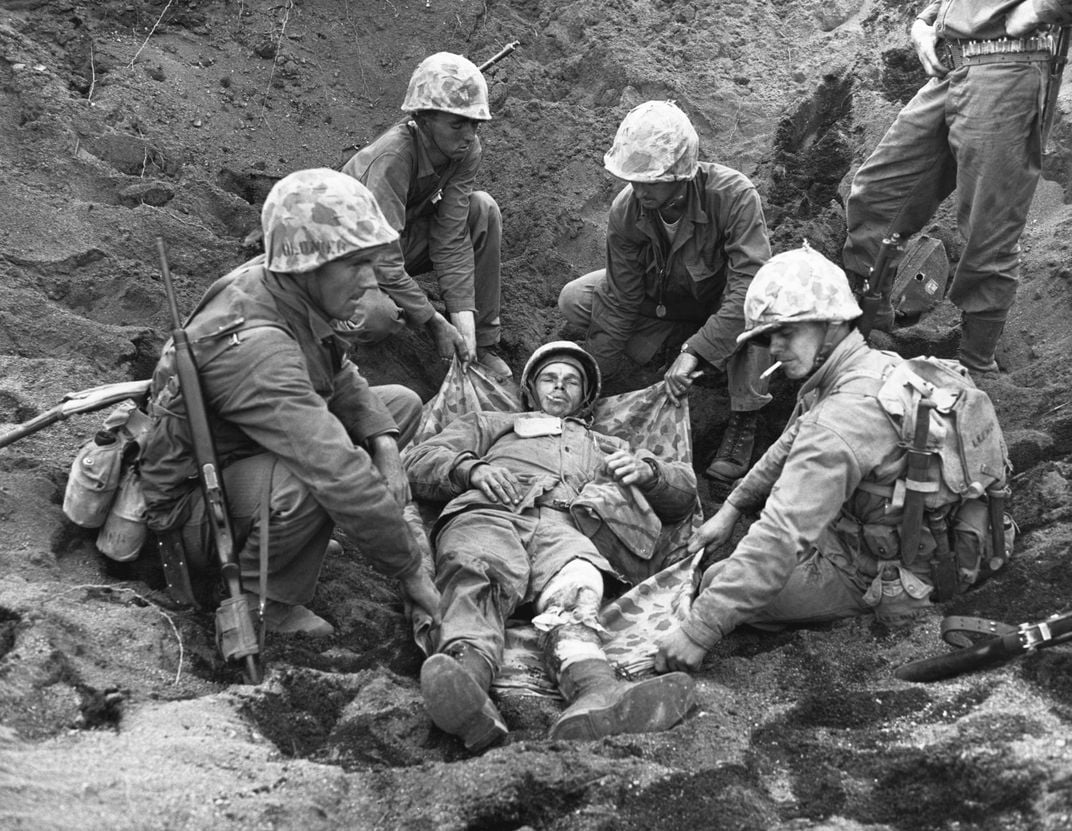
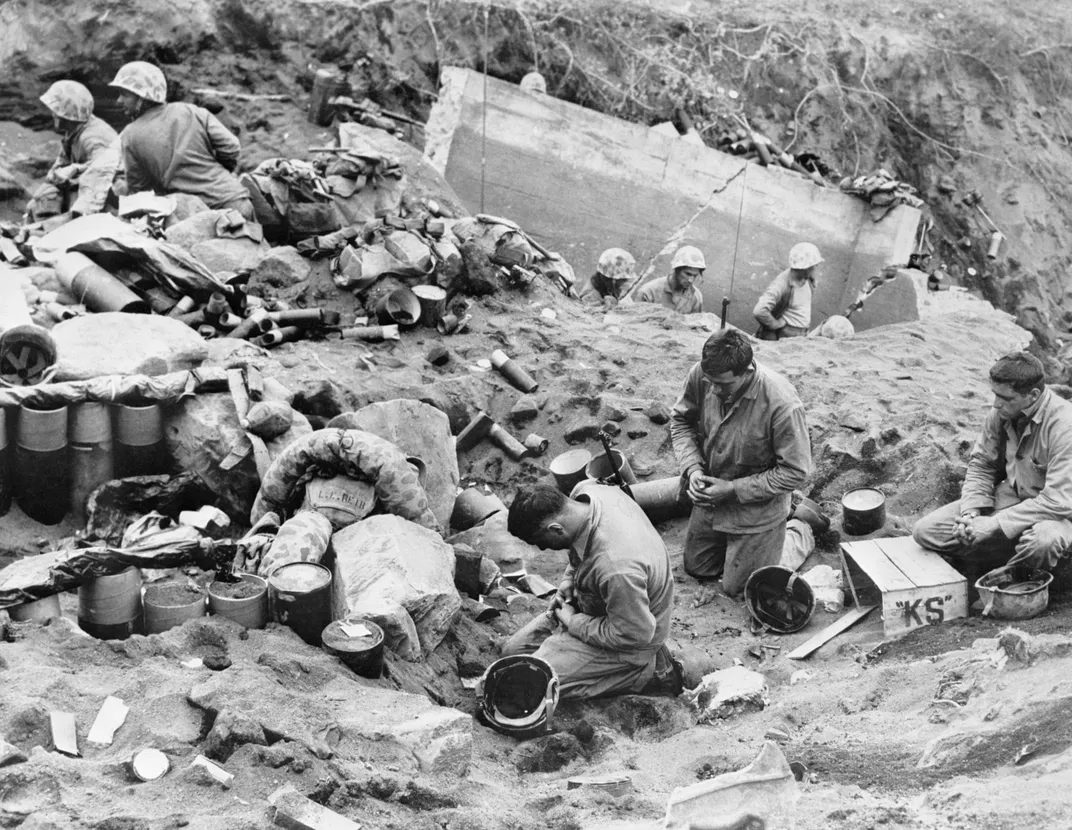
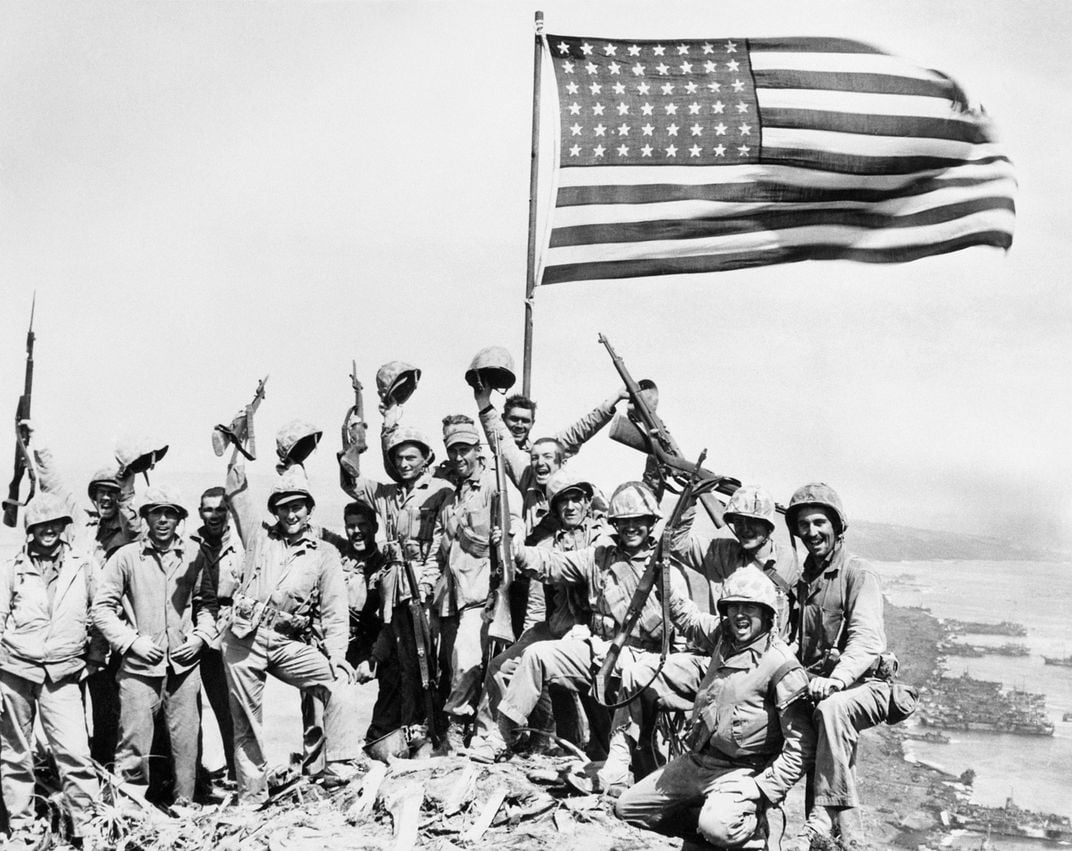
Seventy years ago, U.S. Marines secured Mount Suribachi on the island of Iwo Jima, beginning a long and bloody fight for control of the World War II Japanese outpost. Associated Press photographer Joe Rosenthal's image of soldiers planting an American flag atop Mount Suribachi has lived on as a symbol of the battle, winning the 1945 Pulitzer Prize for photography and inspiring the U.S. Marine Corps War Memorial in Arlington, Virginia.
The United States eventually secured the 8-square-mile island, located approximately 760 miles south of Tokyo, but not without sacrifice. American troops would fight for a month more after taking Mount Suribachi and the first of two Japanese airfields. Capturing Iwo Jima was of strategic importance to B-29 air raids on mainland Japan. It also demonstrated to the Americans that the Japanese army would defend their lands at all costs, something which influenced United States’ decision to bomb Hiroshima and Nagasaki later that year.
The first of 70,000 Marines arrived on the southern coast of Iwo Jima on February 19, 1945 and fought for control of the island until March 26. Though American forces outnumbered Japanese troops three-to-one, the Japanese used a system of dugouts, blockhouses and underground tunnels to their advantage. In the end, few Japanese troops survived the battle. The U.S. suffered over 20,000 casualties.
Fleet Admiral Chester Nimitz said of the fight: “Among the Americans who served on Iwo Island, uncommon valor was a common virtue.” Twenty-seven Medals of Honor were awarded for actions at the Battle of Iwo Jima, the most of any World War II operation.
Get the latest History stories in your inbox?
/https://tf-cmsv2-smithsonianmag-media.s3.amazonaws.com/accounts/headshot/Screen_Shot_2018-08-01_at_7.20.11_PM.png)
Melissa Wiley | READ MORE
Melissa Wiley writes and manages special projects for Smithsonian.com.
/https://tf-cmsv2-smithsonianmag-media.s3.amazonaws.com/accounts/headshot/Screen_Shot_2018-08-01_at_7.20.11_PM.png)
